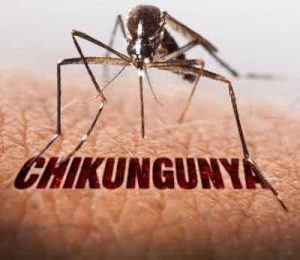- Home
- Editorial
- News
- Practice Guidelines
- Anesthesiology Guidelines
- Cancer Guidelines
- Cardiac Sciences Guidelines
- Critical Care Guidelines
- Dentistry Guidelines
- Dermatology Guidelines
- Diabetes and Endo Guidelines
- Diagnostics Guidelines
- ENT Guidelines
- Featured Practice Guidelines
- Gastroenterology Guidelines
- Geriatrics Guidelines
- Medicine Guidelines
- Nephrology Guidelines
- Neurosciences Guidelines
- Obs and Gynae Guidelines
- Ophthalmology Guidelines
- Orthopaedics Guidelines
- Paediatrics Guidelines
- Psychiatry Guidelines
- Pulmonology Guidelines
- Radiology Guidelines
- Surgery Guidelines
- Urology Guidelines
Decoded-Why chikungunya, other arthritis-causing viruses target joints

The molecular handle that chikungunya grabs to get inside the cells, had led the researchers at Washington University to create decoy handles that reduced chikungunya infection and signs of arthritis. The researchers have found that the protein called Mxra8, is needed for chikungunya to invade both human and mouse cells.
There are no specific treatments or vaccines for chikungunya and related viruses, known as arthritogenic alphaviruses. Doctors simply recommend rest, fluids and over-the-counter pain relievers such as acetaminophen or ibuprofen.
Scientists have understood little about how chikungunya and related viruses cause arthritis. The researchers at Washington University. have identified the molecular handle that chikungunya virus attaches to get inside the cells. The handle, or receptor, is located on cells that build cartilage, muscle, and bone. Joints are filled with such cells, which makes the patients feel painful symptoms. This breakthrough led the researchers to create decoy handles which reduced chikungunya infection and signs of arthritis.
"We now know how chikungunya gets into cells, and we may have found a way to block the infection. If the virus cannot get into the cell, it is unable to replicate and cause infection and disease, said Michael S. Diamond, MD, Ph.D., the Herbert S. Gasser Professor of Medicine at the School of Medicine
Diamond et.al have identified the protein on cells that chikungunya virus attaches to. The researchers found that the protein is called Mxra8, and it is needed for chikungunya to invade both human and mouse cells. Additional experiments showed that not just chikungunya but its arthritis-causing species - Mayaro, Ross River, O'nyongnyong and Barmah Forest viruses - require the protein to get into cells.
As chikungunya uses Mxra8 protein as a handle to open a door into cells, the researchers tested whether preventing the virus from holding that handle could reduce infection. They flooded the virus with decoy handles, with a logic that chikungunya would grab the decoy and be locked out of cells. Researchers proved themselves to be correct. Only a few individual viruses luckily got attached to a true handle and infected the cells, the effect decreased overall infection rate and signs of arthritis.
The study found that a day after infection, the level of virus in the mice's ankles and calf muscles were between 10 to 100 times lower in the animals that had been treated with Mxra8 proteins or blocking antibodies than those that received placebo, and the numbers remained lower over the next two days. Much less swelling was seen in the ankles of mice that received the placebo after 3 days.
The study concluded that a compound that blocks the virus from attaching to Mxra8 on the surface of cells could prevent or reduce arthritis. The mode of action of Mxra8 is not yet known in the human body, so more information has to be extracted before developing a drug that targets Mxra8.
The researchers believe that a drug can be developed in near future that targets the virus and prevents it from attaching to the protein.
The study was published in the journal Nature

Disclaimer: This site is primarily intended for healthcare professionals. Any content/information on this website does not replace the advice of medical and/or health professionals and should not be construed as medical/diagnostic advice/endorsement or prescription. Use of this site is subject to our terms of use, privacy policy, advertisement policy. © 2020 Minerva Medical Treatment Pvt Ltd